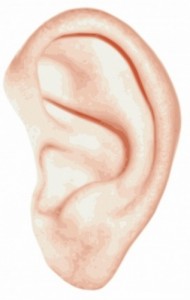By Nathan Gomez
 Advancements in hearing aid technology have made it possible for many people with hearing impairments to significantly improve their ability to hear. While hearing aids have been in existence since the 19th century, they’ve changed so rapidly over this time that today’s devices are almost unrecognizable to the ones available in the past. This article takes a look at the evolution of the hearing aid from the 19th century right through to 2016.
Advancements in hearing aid technology have made it possible for many people with hearing impairments to significantly improve their ability to hear. While hearing aids have been in existence since the 19th century, they’ve changed so rapidly over this time that today’s devices are almost unrecognizable to the ones available in the past. This article takes a look at the evolution of the hearing aid from the 19th century right through to 2016.
The Early Model
The first hearing aids came out in the 19th century and were essentially ear trumpets that projected sound through a funnel. Once Alexander Graham Bell invented the telephone in 1876, however, hearing aid technology was vastly improved. Bell’s revolutionary invention allowed hearing aid manufacturers to further regulate the frequency, loudness and distortion of sounds that would come through the hearing aid.
The Turn of the 20th Century
1913 was the year that the Siemens Company began production on the first hearing aids to be electronically amplified. As is probably expected of machinery at that time, these hearing aids were bulky and not easy to carry around. They were similar in size to a cigar box, with a speaker that fitted into the ear.
The next major advancement in hearing aid technology came just seven years later, with the development of the vacuum tube in 1920. Invented by naval engineer Earl Hanson, the vacuum tube used a telephone transmitter to convert speech into electrical signals.
Post World War 2
In 1948, Bell Laboratories released the transistor. This was the next big turning point in the technological evolution of hearing aids and would continue to remain a defining component for decades to come.
The 1970s saw the creation of the first microprocessor, which enabled technology to start getting more compact while still maintaining the hearing aids’ ever-improving clarity. In 1975, Daniel Graupe produced a six-channel hearing aid which offered digital control of the frequency across all channels.
The Digital Age
1987 saw the launch of the first commercial digital hearing aid. Bell Laboratories created a hybrid digital/analog hearing aid that fitted around and into the ear. Other companies followed suit by designing their own hybrid hearing aids with analog amplifiers and filters that were able to be controlled digitally. In 1996, the first digital hearing aid to be commercially successful was launched by Widex.
The Present Day
Hearing aids have come a long way from the ear trumpets of the late 19th century. In 2016, they are considerably smaller and come with a wealth of added features. One of the most noted advancements of modern-day hearing aids is the invention of invisible Lyric hearing aids, which sit deep in the ear canal, making them virtually invisible to other people. For hearing aid wearers that might have been self-conscious about having their mechanism on display for all to see, this is a big move forward. We can only wonder how hearing aids will continue to evolve in the future!
